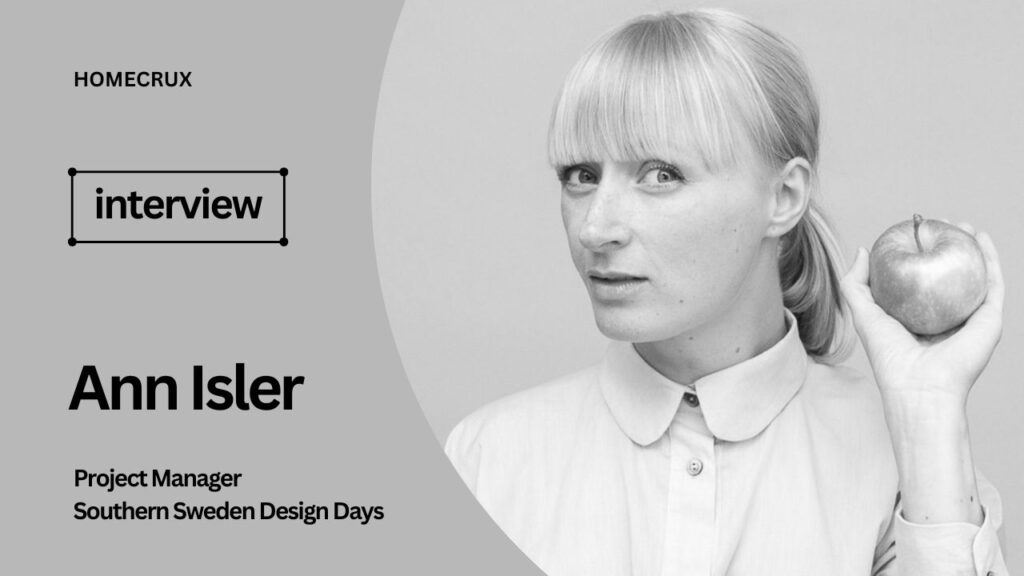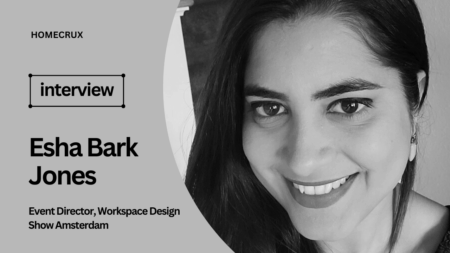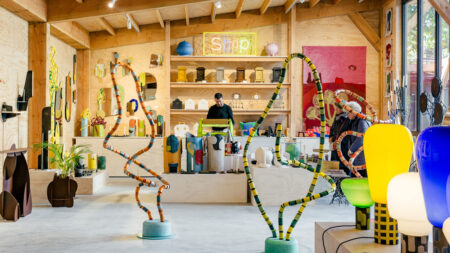Southern Sweden Design Days (SSDD), which recently concluded its fifth edition, has solidified its place as a cornerstone of Malmö’s cultural scene. Under the 2025 theme ‘ECHO,’ the festival explored the “interplay between past, present, and future,” encouraging designers to create work that resonates with societal and environmental impact.
In its fifth edition, SSDD organized 170 program items at over 80 locations, emphasizing experimental, sustainable, and cross-disciplinary design through a bottom-up approach, giving equal visibility to both emerging talents and established names. Homecrux caught up with SSDD’s (Malmö Design Week) Project Manager, Ann Isler, to know her thoughts on how SSDD aims to be Northern Europe’s leading design festival, fostering networking, business opportunities, and cross-border partnerships while challenging traditional Scandinavian design norms.
In the interview, Ann also tells us how SSDD is prioritising sustainability and innovation, and supporting local designers through open calls and global exposure, thus creating a dynamic ecosystem that continues to elevate Malmö as a recognized design destination. Read the full interview below to explore more.
Homecrux (HC): Could you tell us a bit about your background and how you got associated with the Southern Sweden Design Days?
Ann Isler (AI): Six years ago, I moved back to Sweden after spending 12 years in Zurich. I first relocated there in 2007 after completing my studies, and over the years, I gained hands-on experience in international retail and distribution, working with iconic Swiss brands like FREITAG and On. From 2011 to 2018, I co-founded and ran a concept store that curated playful, creative pieces across fashion, furniture, and art.
Returning to Sweden, I was eager to grow professionally and dreamed of working with events that support emerging designers. That ambition led me to a casual coffee with Terese Alstin from Form/Design Center – one of the initiators of Southern Sweden Design Days. The conversation inspired me to send a spontaneous application, and eight months later, I joined the team as a part-time production manager.
HC: What is your current role in the festival, and what a typical day looks like for you during the event?
AI: As the Project Manager of the festival, I oversee all aspects of the event, from strategic planning to day-to-day operations. A typical day during the festival, such as the opening day starts early and finishes late. I begin the day reviewing my agenda and inbox and preparing for meetings with the press and media, of course, with a good cup of coffee. During the event itself, I spend most of my time at Lokstallarna in Kirseberg, our main venue, where visitors can explore 6,000 square meters of exhibitions, workshops, and a studio featuring live talks. There, I coordinate the work of the SSDD team, our volunteers, exhibitors, and stakeholders, making sure everything runs smoothly while also handling any issues that may arise, from parking and payments to security concerns. On the opening day, my focus shifts to making sure everything is perfectly in place for the evening’s opening party, ensuring the atmosphere is set for a memorable start to the festival.
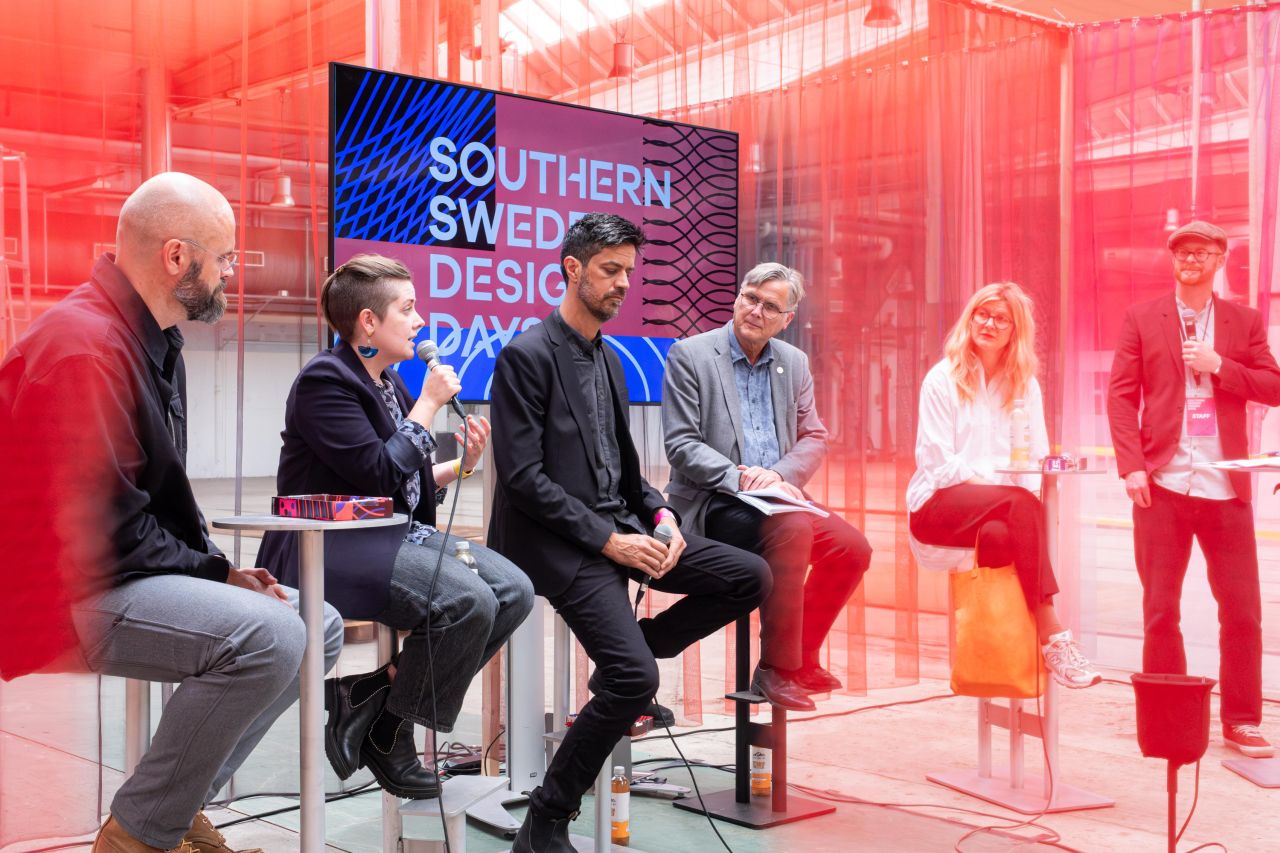
HC: How has your previous experience shaped your approach to curating and managing this international design platform?
AI: My time at FREITAG was the best “school” I could have asked for when it came to learning how to build a strong and authentic brand, through curated distribution and hands-on marketing such as events and community engagement. I also came to appreciate how the Swiss business culture values precision and high quality, which I believe is essential when building a successful team and organising a festival. Later, as co-founder of the concept store Waldraud, I further refined those skills by curating brands, working with pop-ups and collaborations, and supporting emerging designers. That experience continues to shape how I build and manage Southern Sweden Design Days together with my team.
HC: What is the core vision of Southern Sweden Design Days, and how has it changed over time?
AI: The vision for Southern Sweden Design Days is to become Northern Europe’s leading design festival. We want it to be a go-to meeting place and annual highlight for professionals in the field, while also serving as a valuable source of inspiration and knowledge for the public, academia, and the business sector. The festival is a platform that showcases the innovative, experimental, and cross-disciplinary work happening within the design community today.
The festival serves as a platform for networking, showcasing ideas, doing business, and building cross-border collaborations. Southern Sweden Design Days is a city-wide celebration where Malmö comes alive with design.
HC: In what ways does Southern Sweden Design Days differentiate itself from other design events in Sweden, including the Stockholm Furniture Fair?
Southern Sweden Design Days aims to create a platform where experimental, sustainable, and forward-thinking design is celebrated. Unlike more commercially focused events like the Stockholm Furniture Fair, SSDD emphasizes the process and impact of design, highlighting its potential to drive change and spread knowledge across different disciplines. A bottom-up approach remains at the heart of the event, setting it apart from other design festivals. Southern Sweden Design Days is an international platform where small and large players share equal visibility, helping to broaden the perception of what Swedish design can be.

HC: This year’s festival theme was ‘Echo.’ What inspired this choice, and how did participants respond to it?
AI: The idea behind this year’s theme was to encourage exploration of the dynamic relationship between the past, present, and future. Like an echo, design doesn’t exist in isolation—it resonates over time, evolves, and influences its surroundings. Every design solution creates ripples, impacting both the environment it inhabits and the people who engage with it.
Southern Sweden Design Days works closely with its design community, and the theme was developed in collaboration with them. Each year, the community is invited to contribute ideas through an open call, followed by workshops where the theme is shaped collectively. It’s important that the theme is broad and inclusive—able to speak to small design collectives, large companies, universities, associations, and organisations alike. The theme often reflects current societal issues, particularly how design can contribute to a sustainable future. At the same time, we value playfulness and humour, which often lead to the most unexpected and innovative program contributions.

HC: How does the festival reflect or challenge Scandinavian design traditions?
AI: While Scandinavian design is often associated with minimalism and functionality, SSDD’s participants push beyond these conventions, experimenting with progressive materials, developing prototypes, visualizing processes, etc. Our festival is a space for challenging norms and redefining what Scandinavian design can be.
HC: In your opinion, what role does design play in solving societal or environmental challenges?
AI: Design has a critical role in shaping our societies and addressing global challenges. Whether it’s reducing waste, creating resilient cities, or fostering social cohesion, designers are uniquely positioned to envision and implement solutions that make a tangible impact.
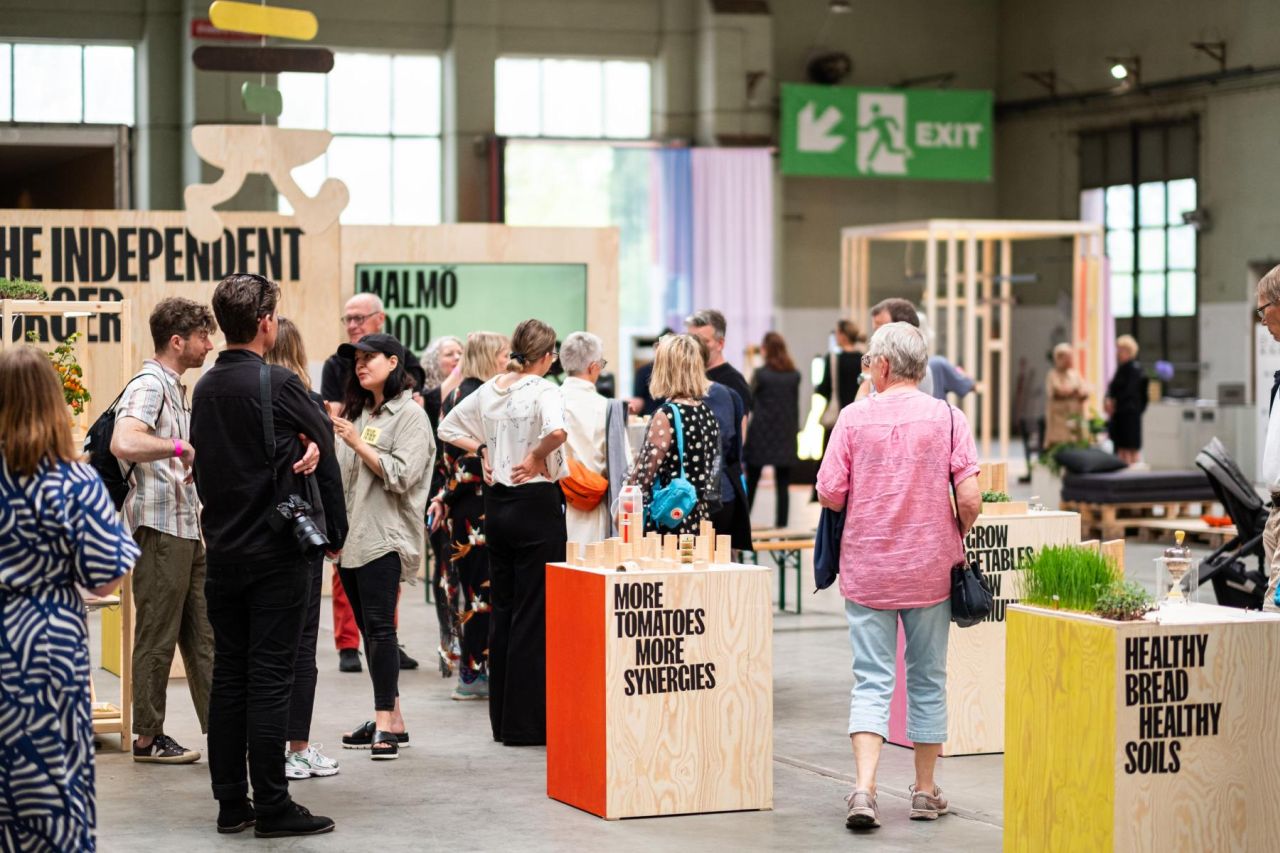
HC: In what ways does the festival support local designers while engaging an international audience?
AI: Giving them a platform for exposure, which in turn creates business opportunities and possibilities where local designers can meet with a design-oriented audience, the professional design sector, and international press.
We are deeply committed to supporting the local design community while creating a platform that reaches a global audience. This is achieved through open calls, collaborative projects, and partnerships that connect designers from Southern Sweden with international press.
HC: What role do emerging designers play in the festival, and how does the festival support them?
AI: Emerging designers are at the heart of the festival, bringing fresh, sustainable, and innovative ideas to the forefront. At Form/Design Center, we regularly organize Open Calls to invite emerging designers to participate in various projects. This initiative helps them gain exposure and connect with a wider audience, while also providing opportunities to collaborate with established brands and professionals. By fostering an environment of creativity, we aim to support these designers in taking the next step toward professional growth, allowing their bold, fun, and surprising ideas to shine.

HC: What impact has the festival had on Malmö’s cultural and creative scene?
AI: Southern Sweden Design Days has become a vital part of Malmö’s cultural landscape, creating opportunities for artists, designers, and makers to showcase their work while fostering a vibrant, creative ecosystem that extends beyond the festival itself.
HC: Could you discuss the challenges faced in organizing such a large-scale design event, particularly in recent years?
AI: One of our biggest challenges came at the very beginning, when the pandemic hit, and we had to postpone the launch of the first edition twice. However, in the end, it turned into a positive challenge that pushed our team to develop new ways of producing a festival with a strong focus on digital content.
Like many other festivals and larger cultural events, securing funding is always a challenge. On top of that, being a small team responsible for planning and executing the entire festival makes it even more demanding. However, we’re incredibly grateful to be celebrating the fifth anniversary of the event, with partners who believe in the festival and volunteers who have supported the organization throughout the realization of each edition.
HC: What are the hopes or goals for the future of Southern Sweden Design Days?
AI: Our goal is for Southern Sweden Design Days to become a firmly established annual festival and a leading platform for professionals in the design field. We also hope it will continue to grow as a valuable source of inspiration and knowledge for the general public, academia, and the business community. In the future, we aim to further promote cross-disciplinary collaborations and strengthen the cultural and creative industries in the region and position it as a nationally and internationally recognized design destination.
We thank Ann Isler for taking the time out for this insightful conversation with us.
Follow Homecrux on Google News!
